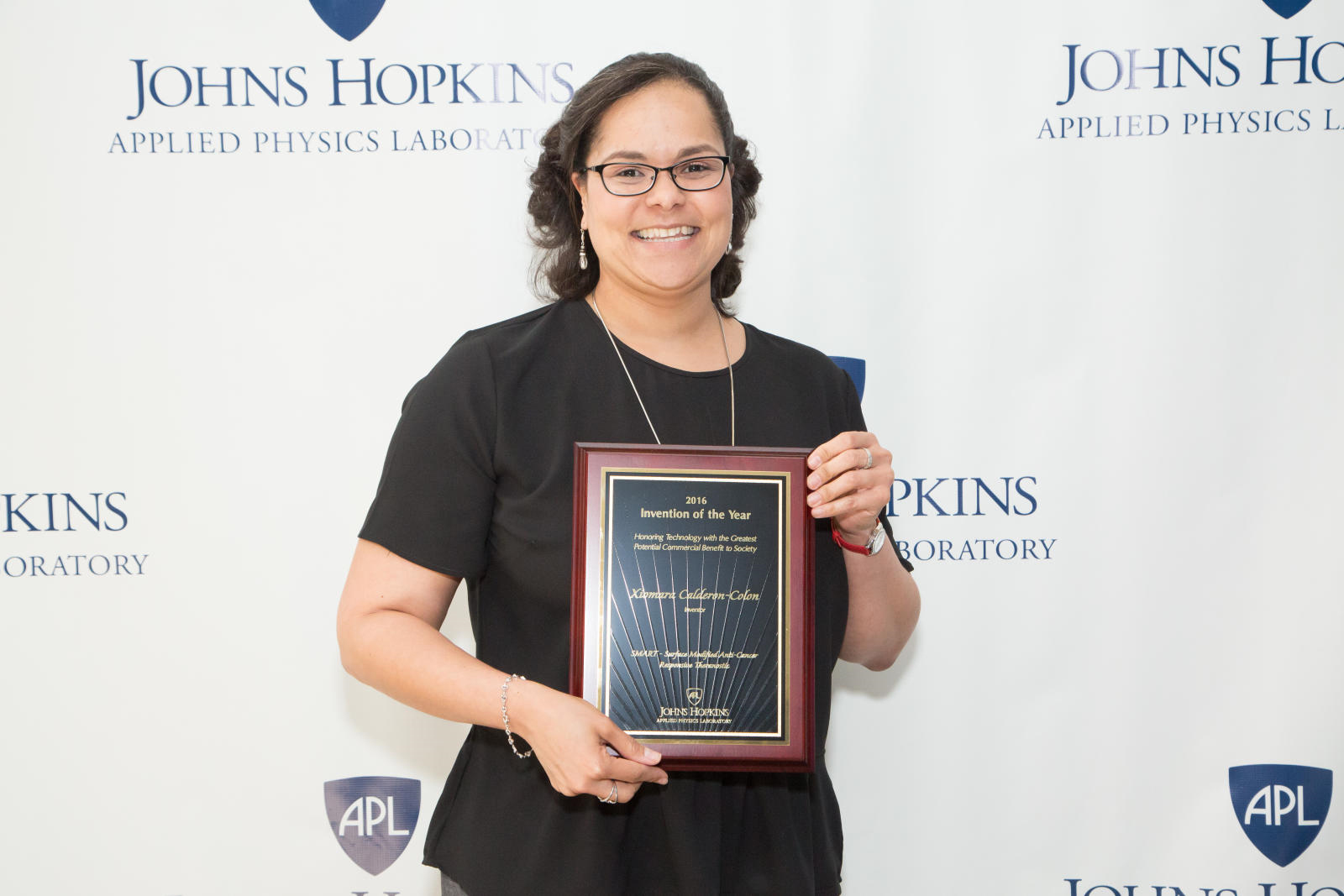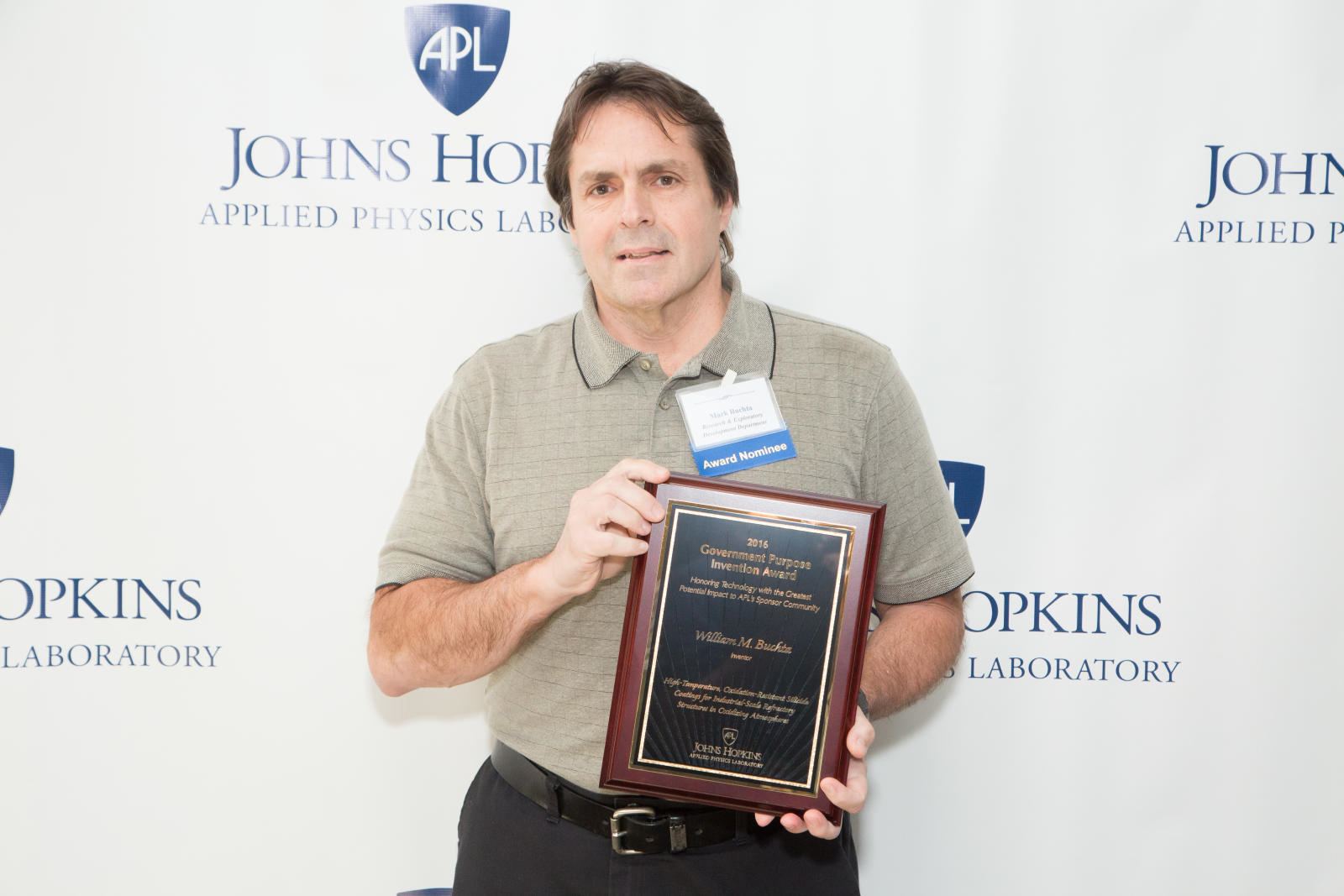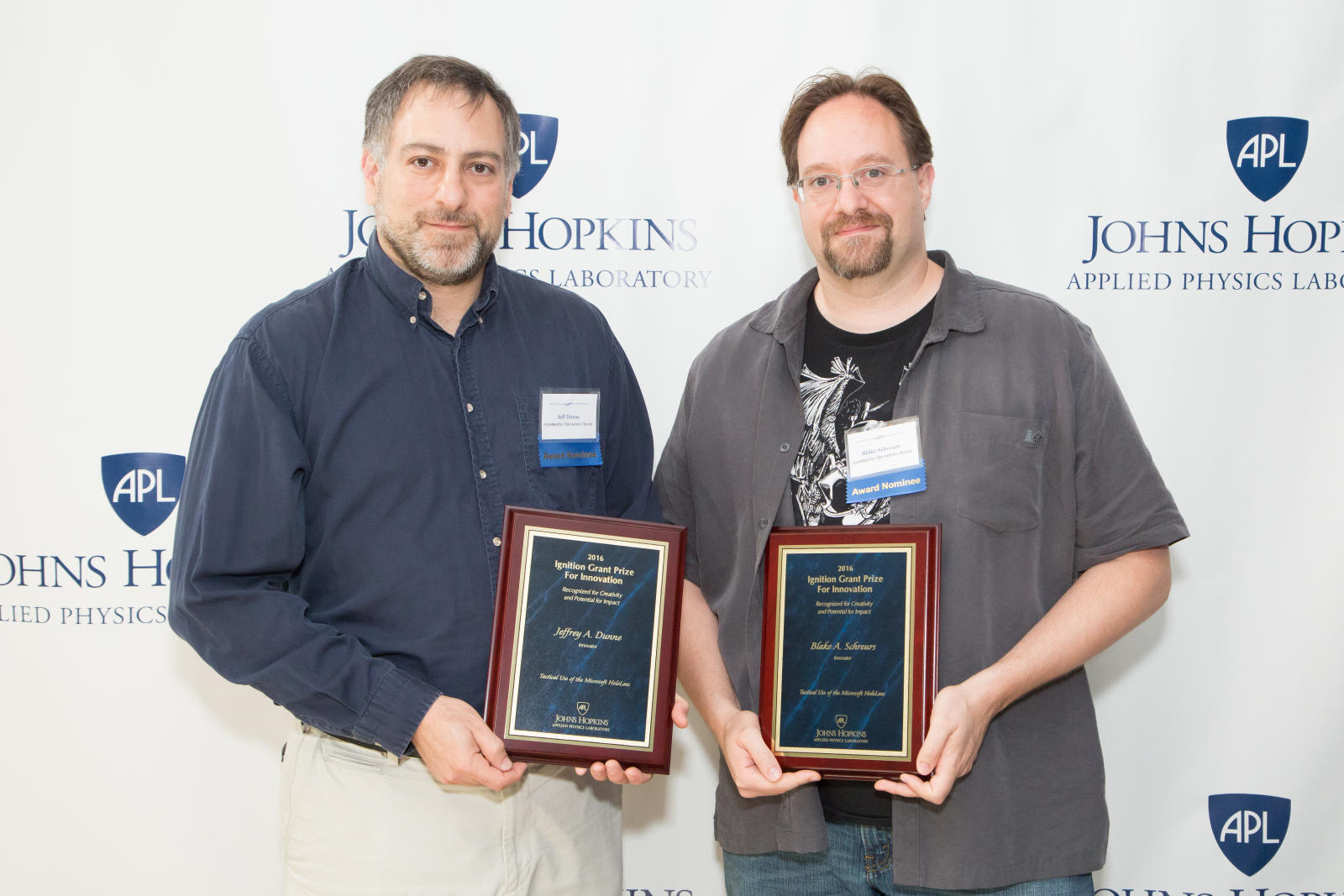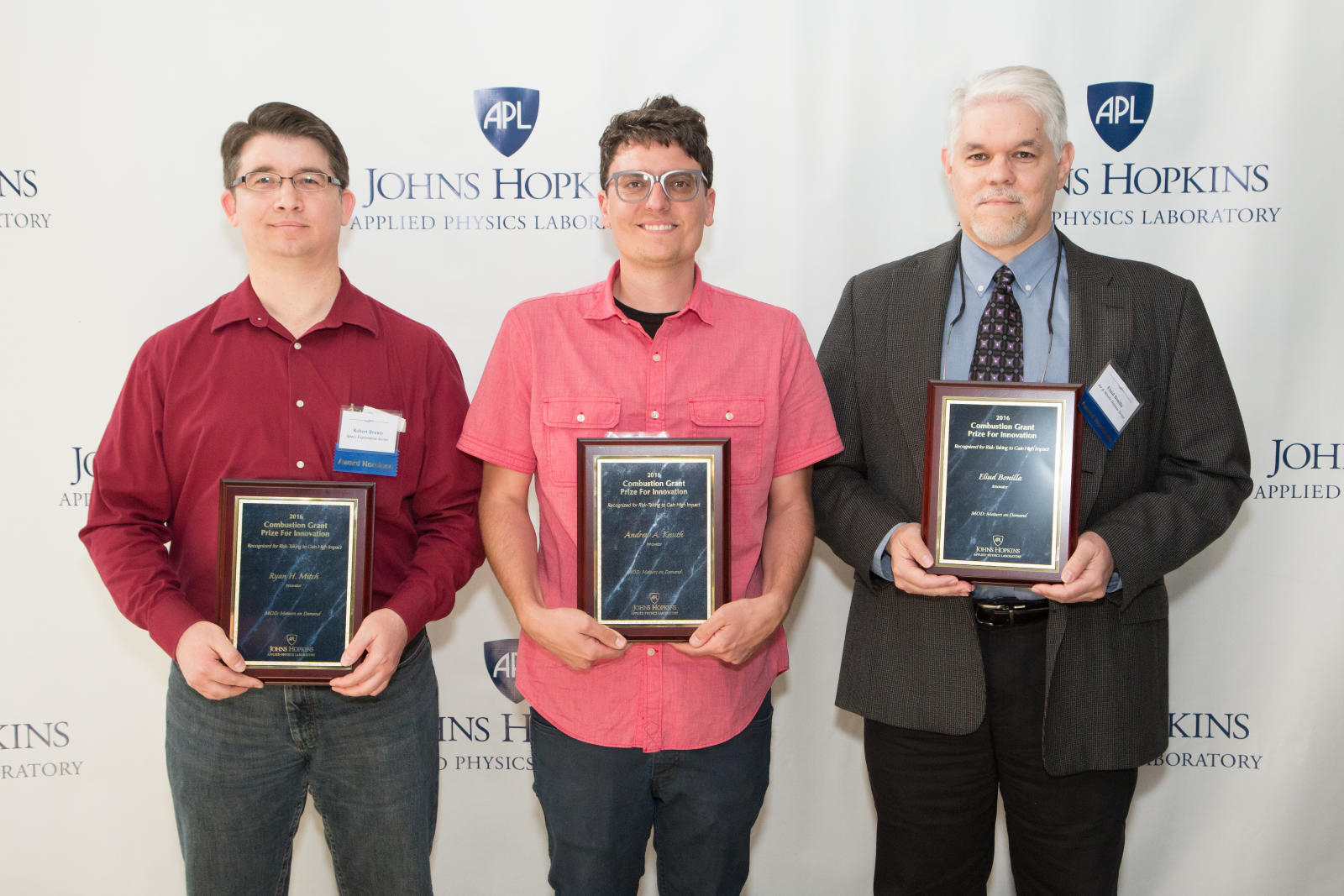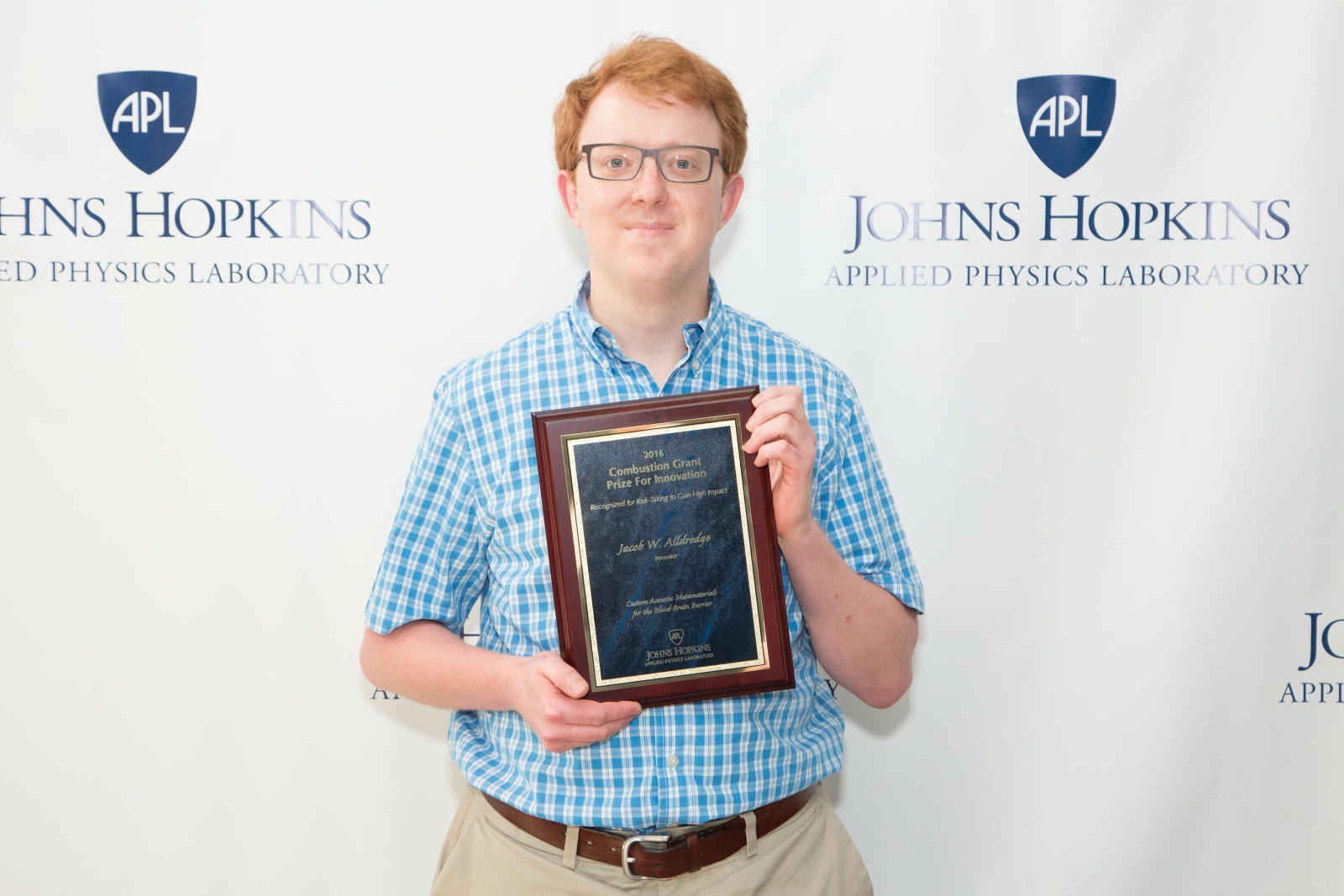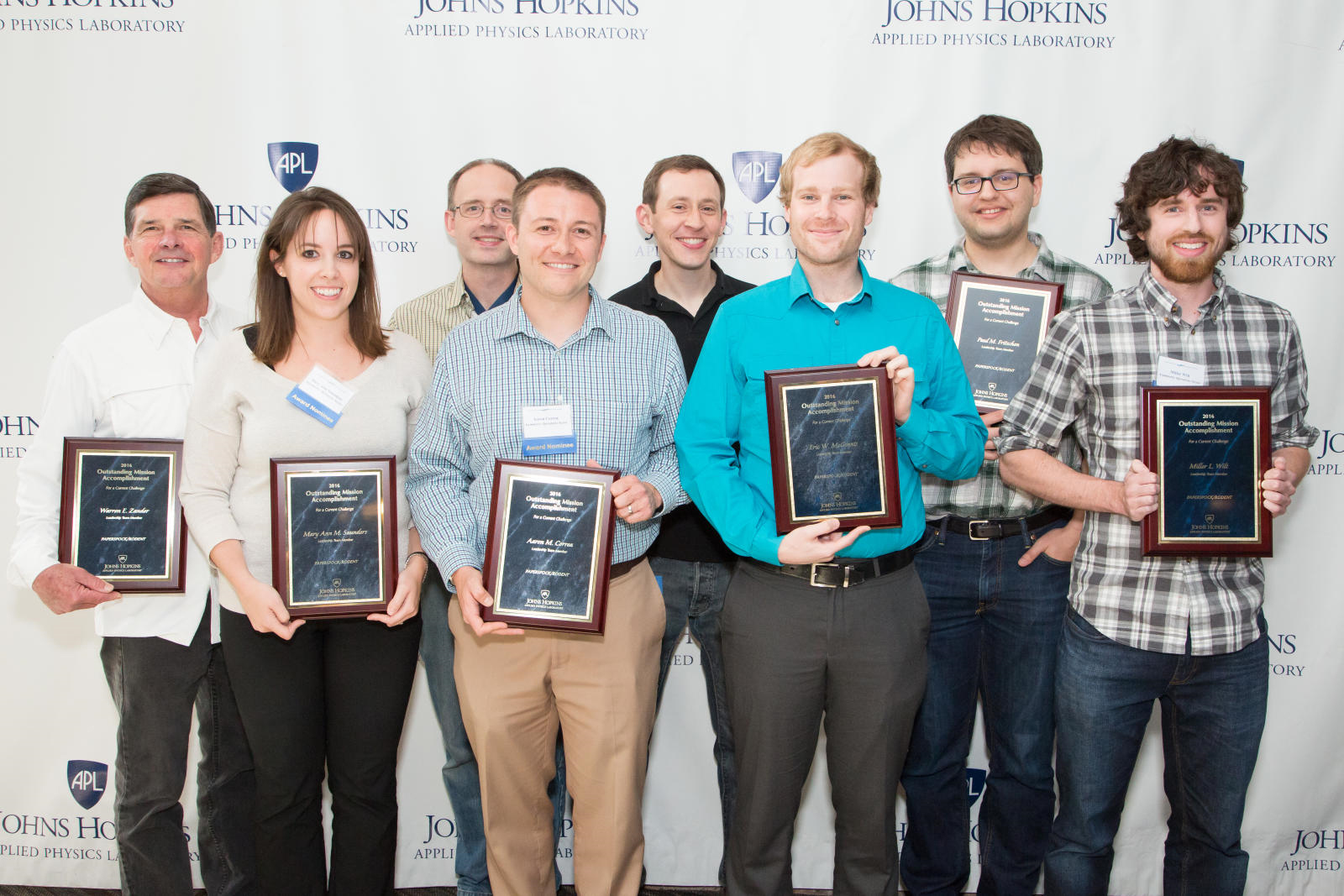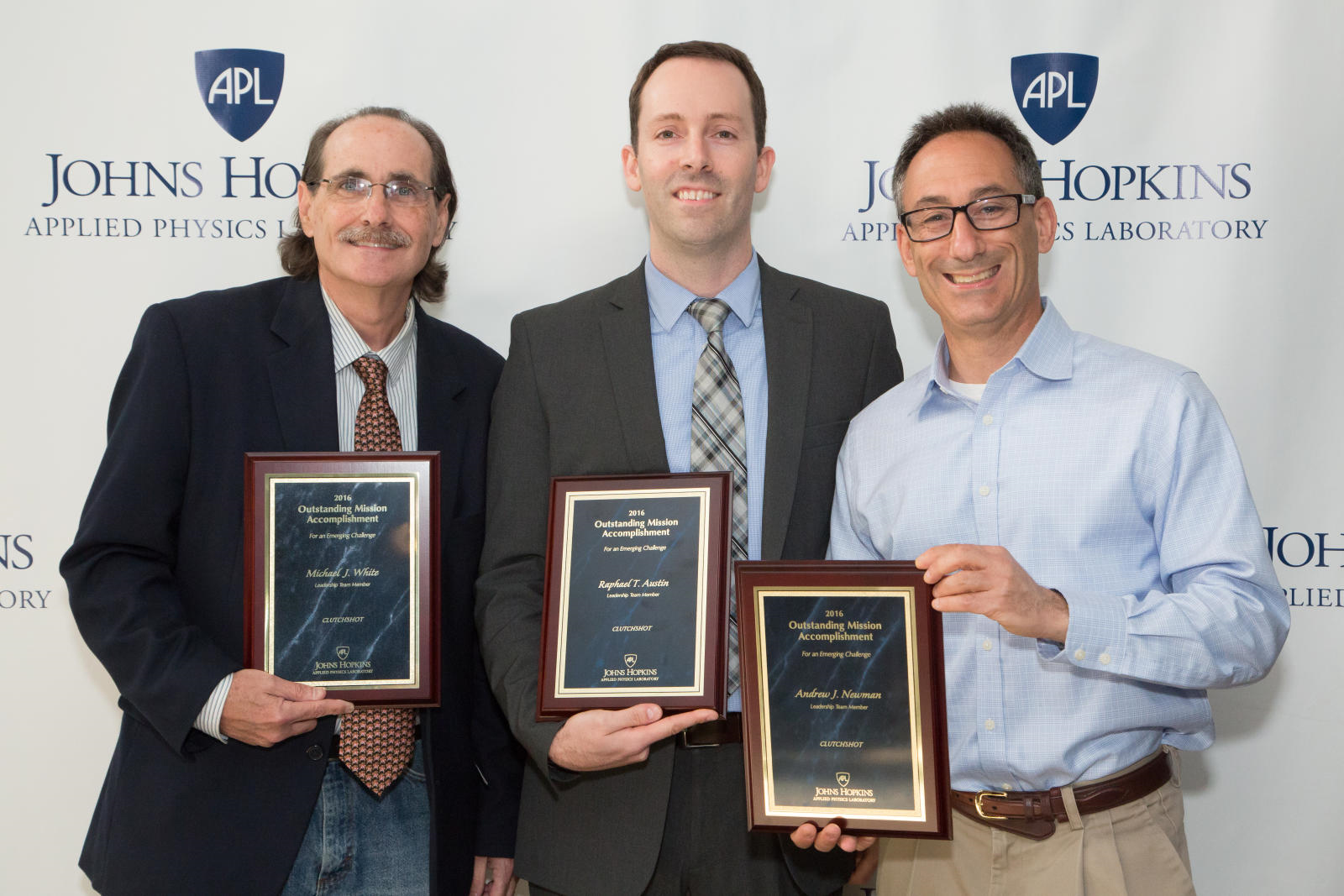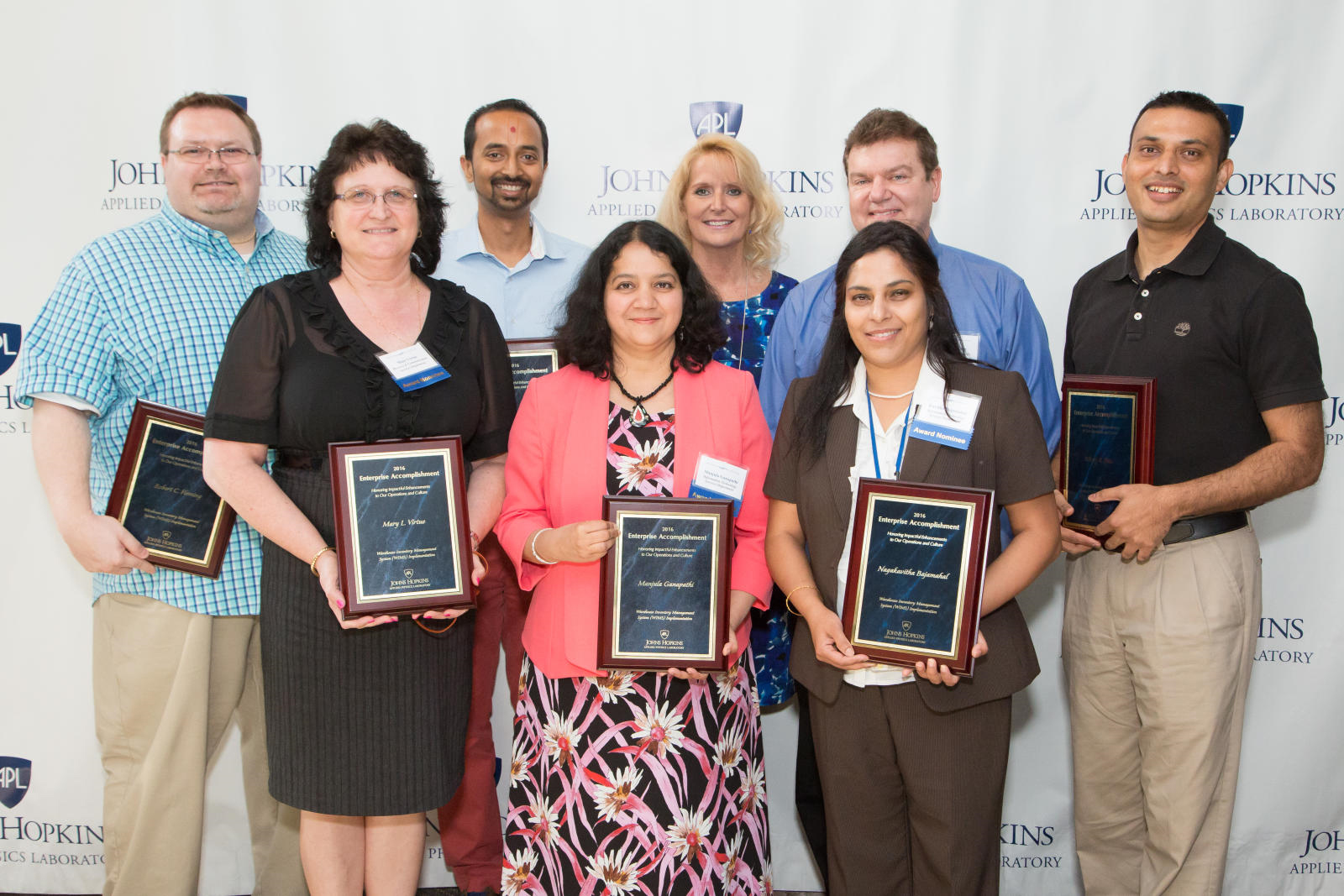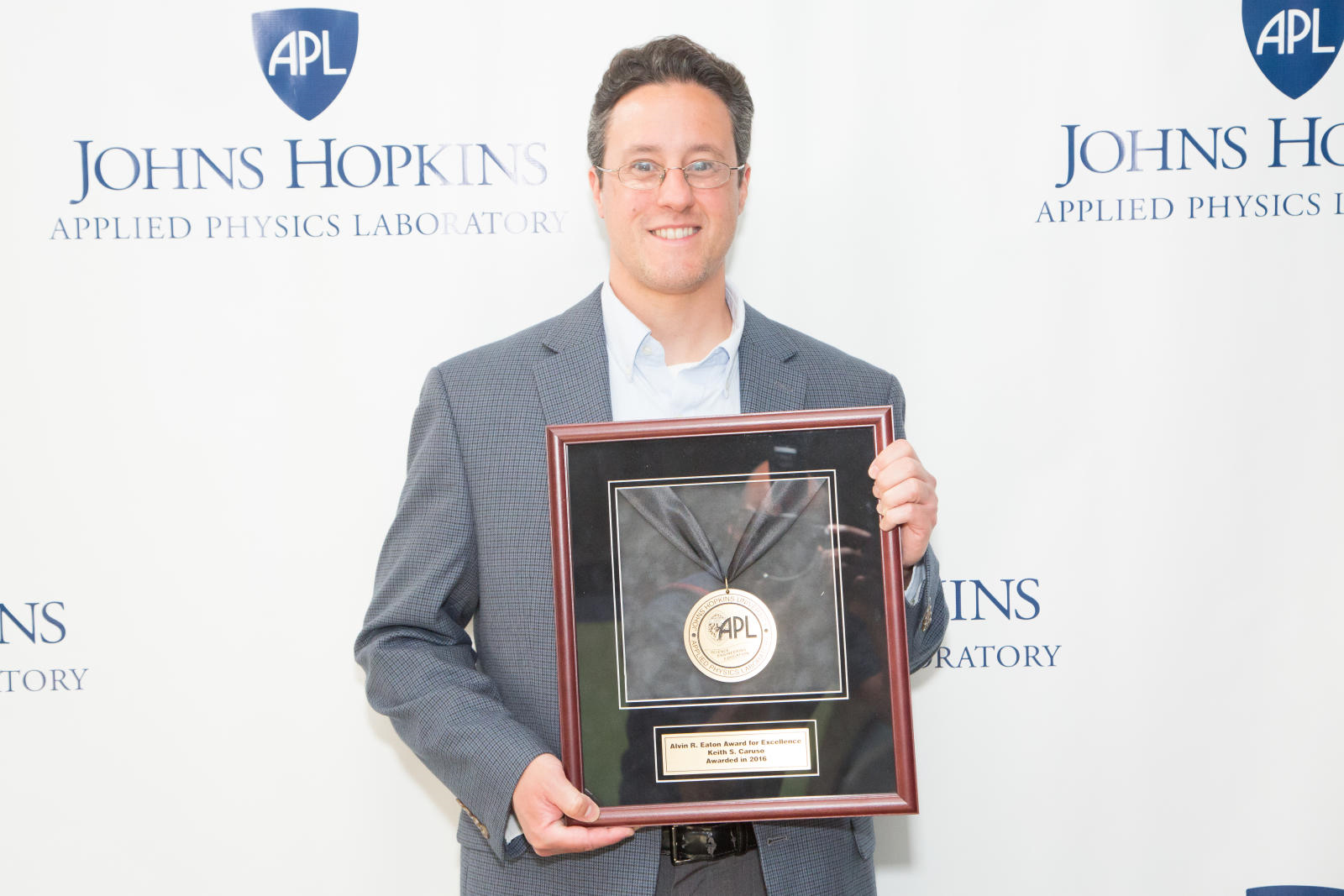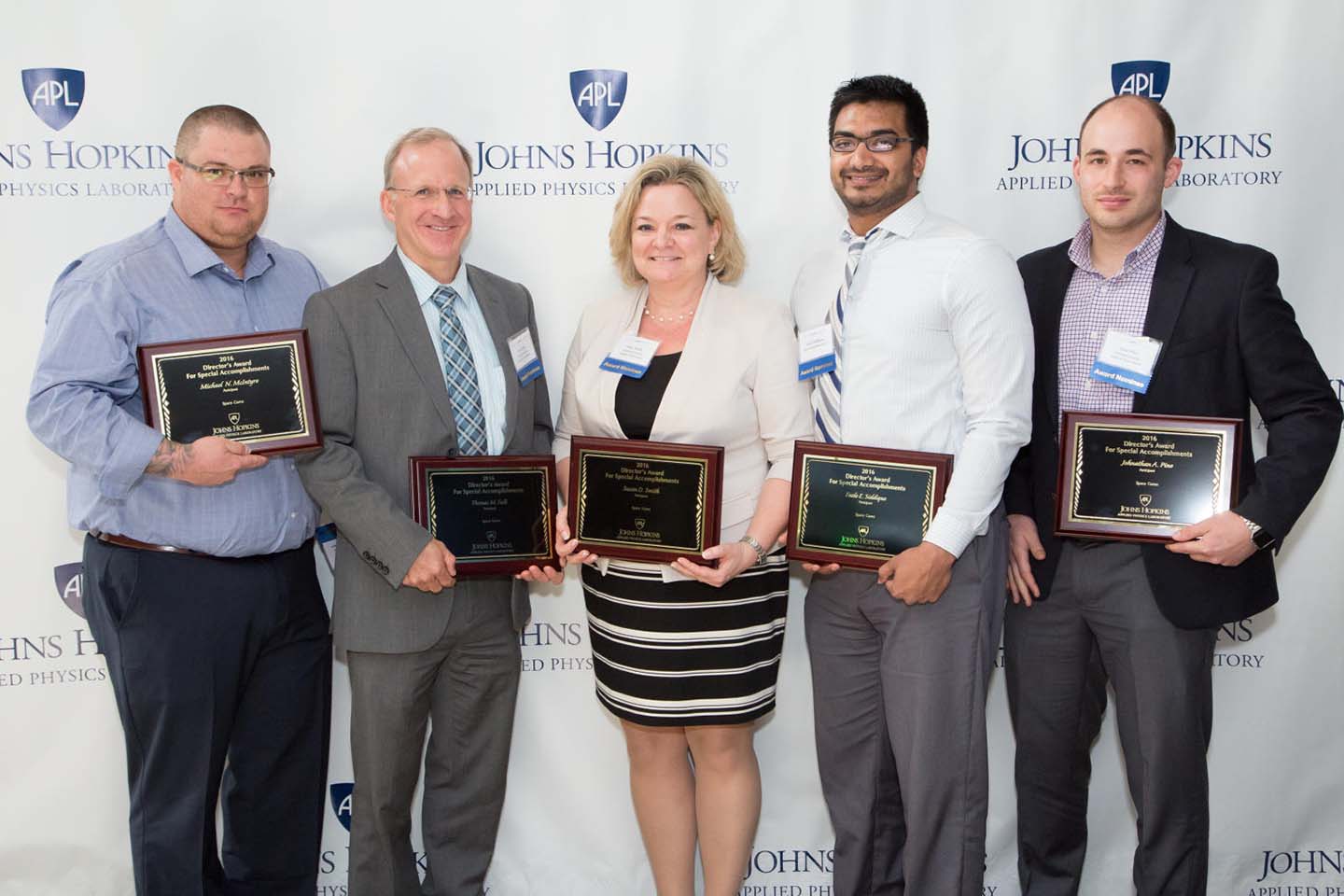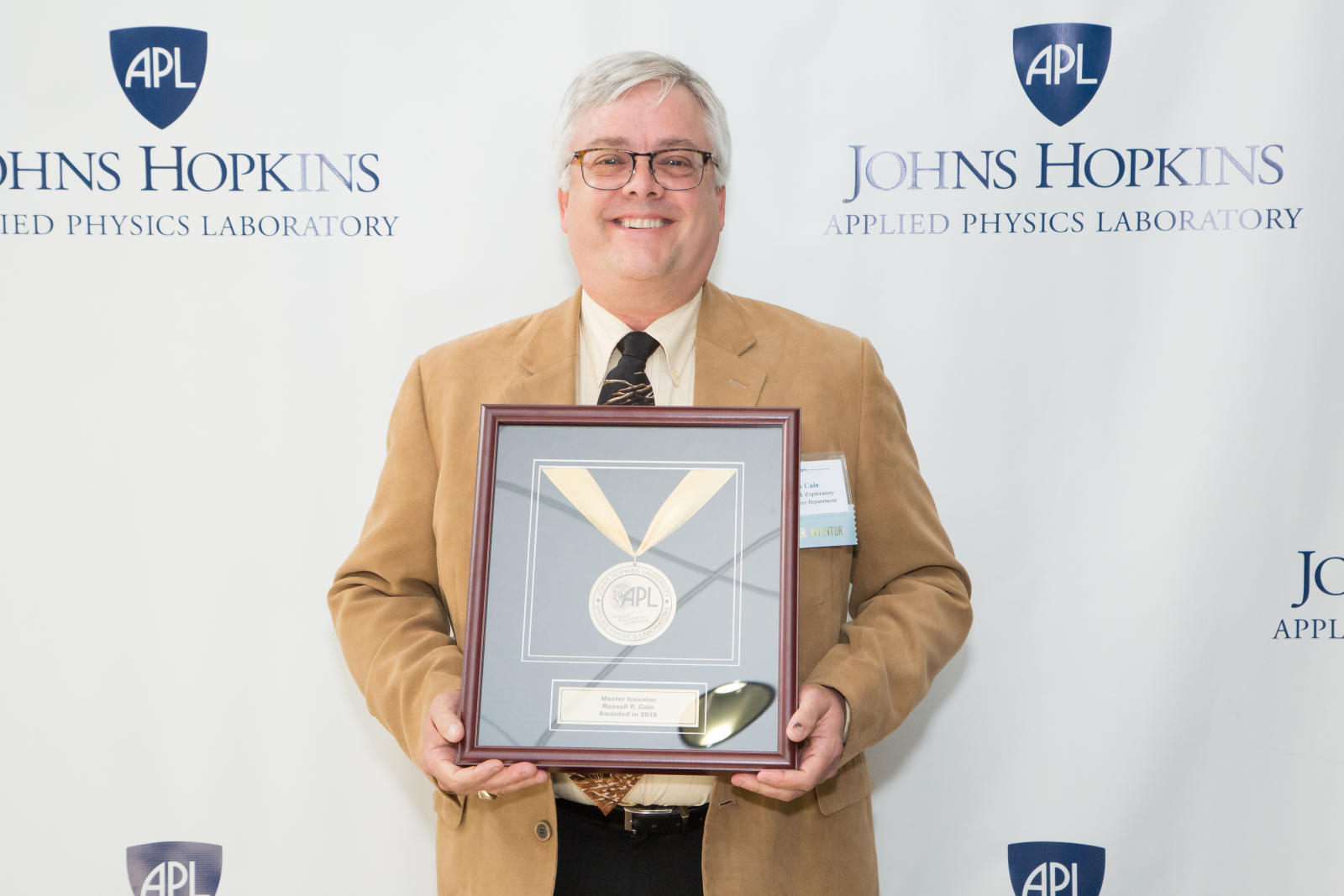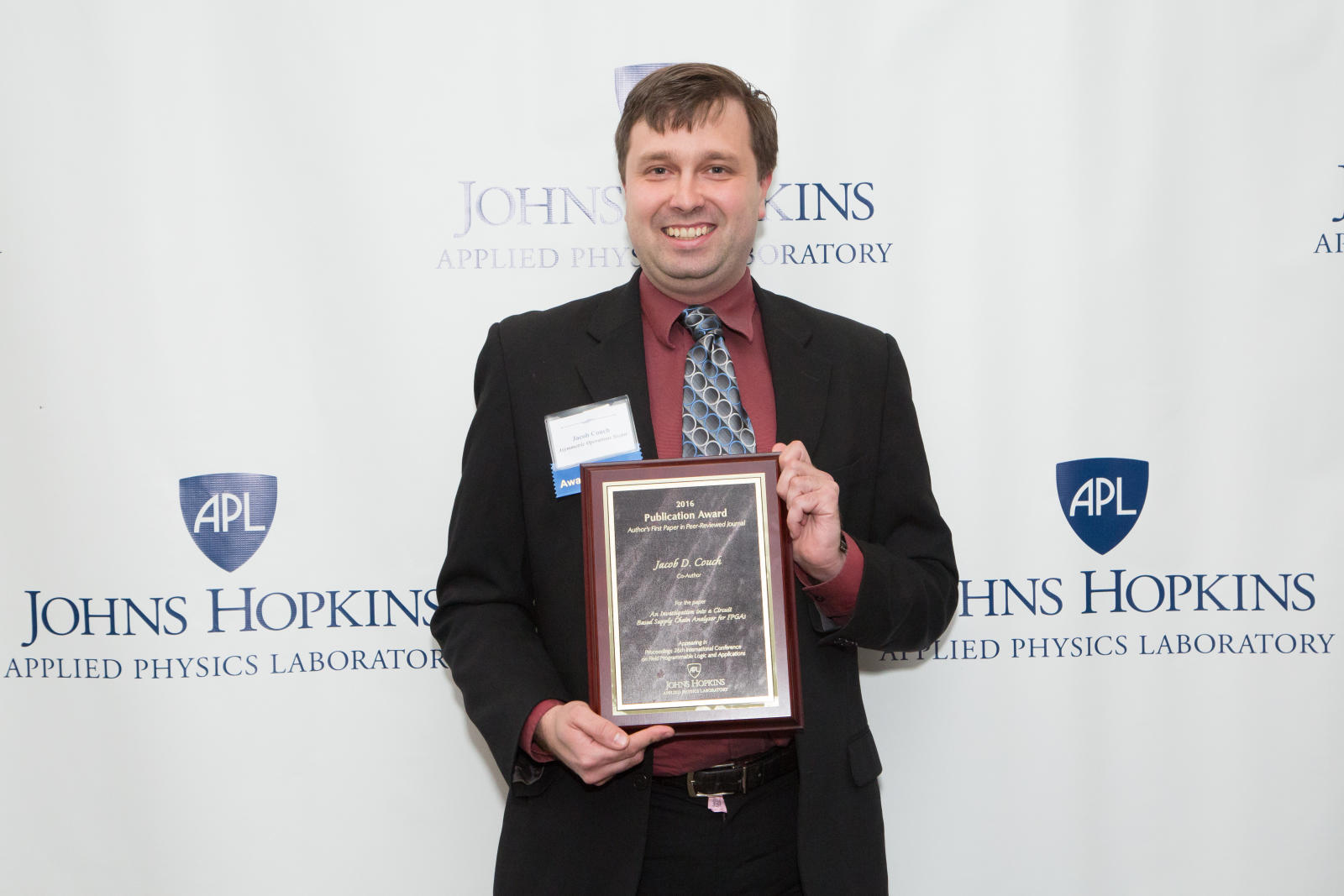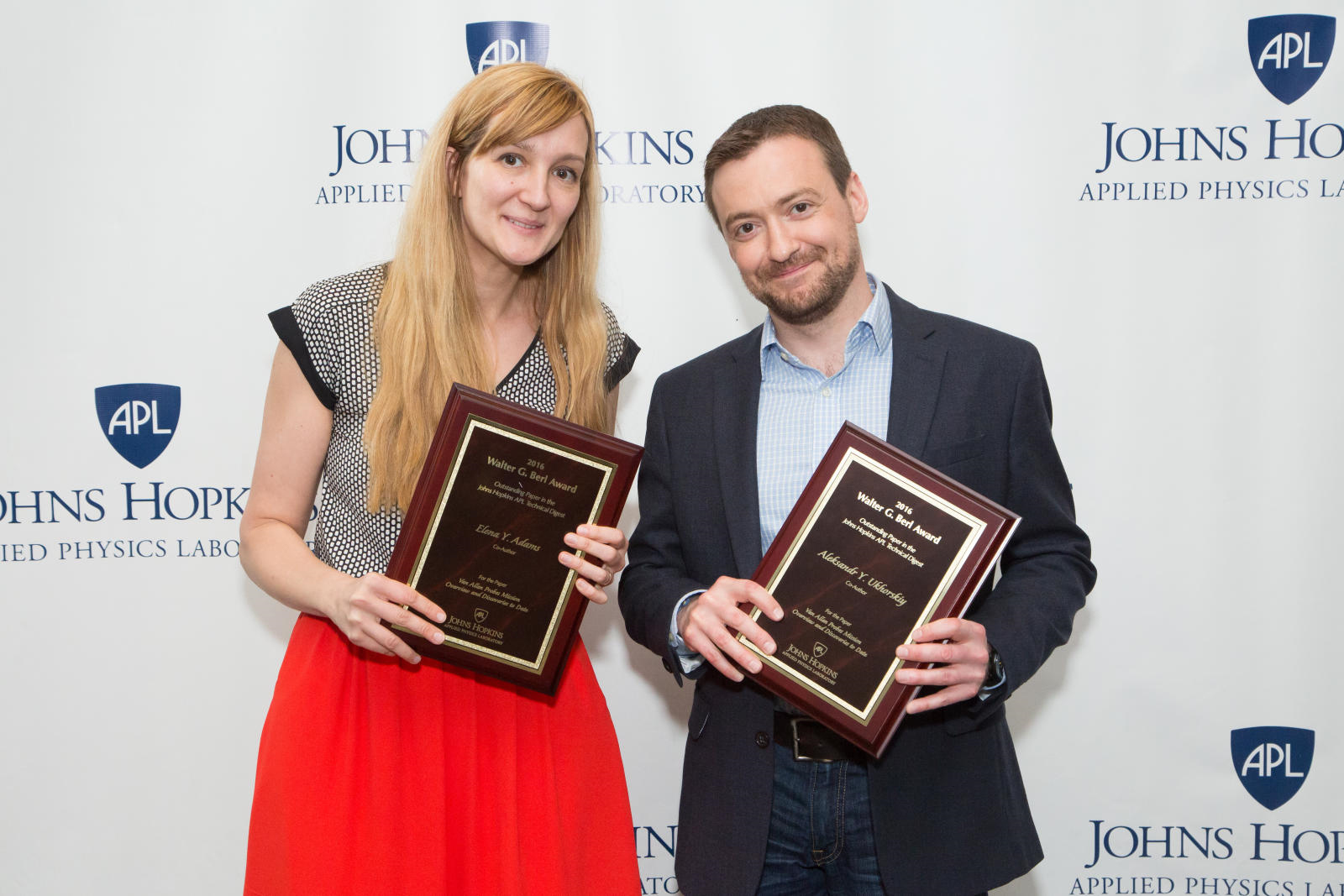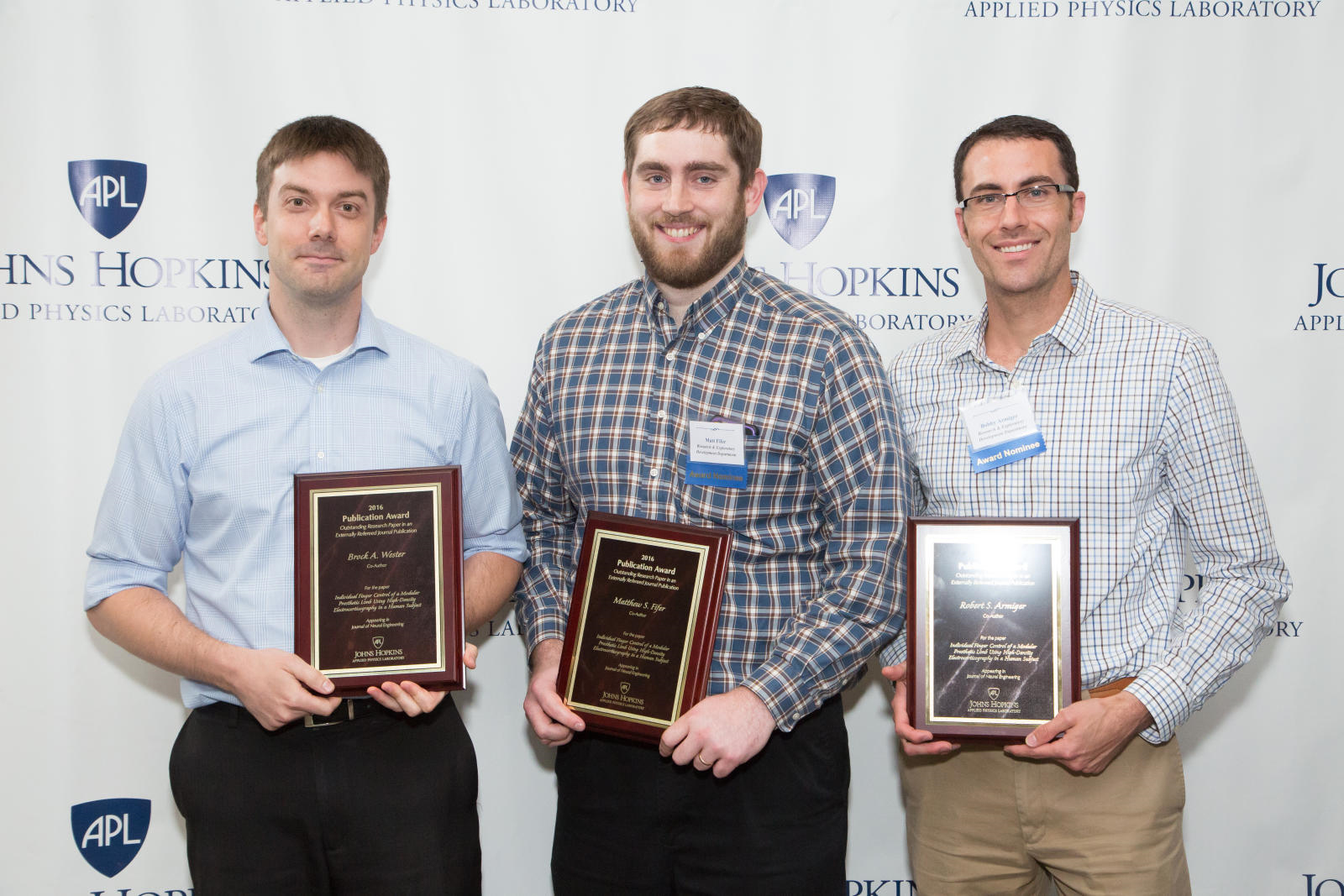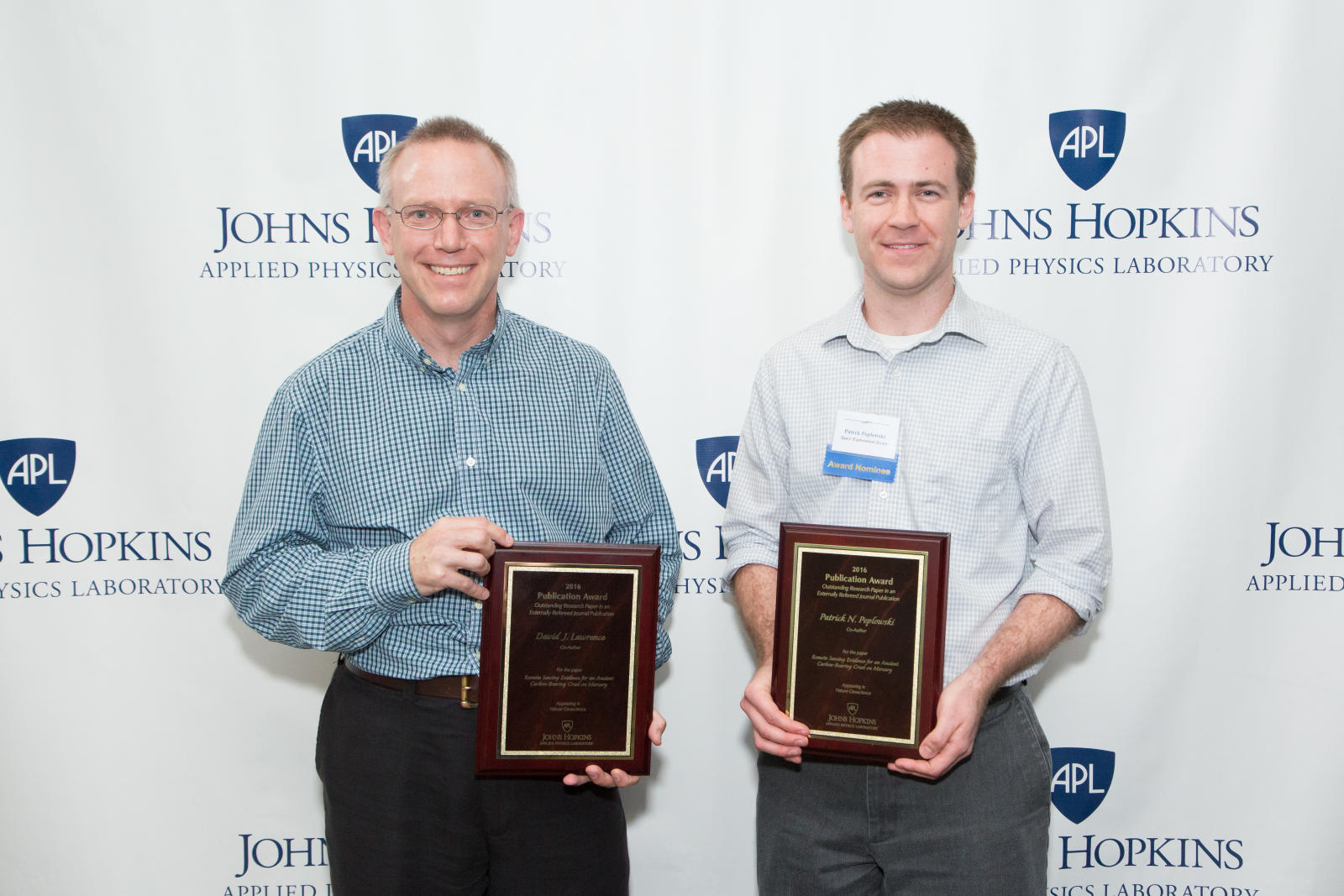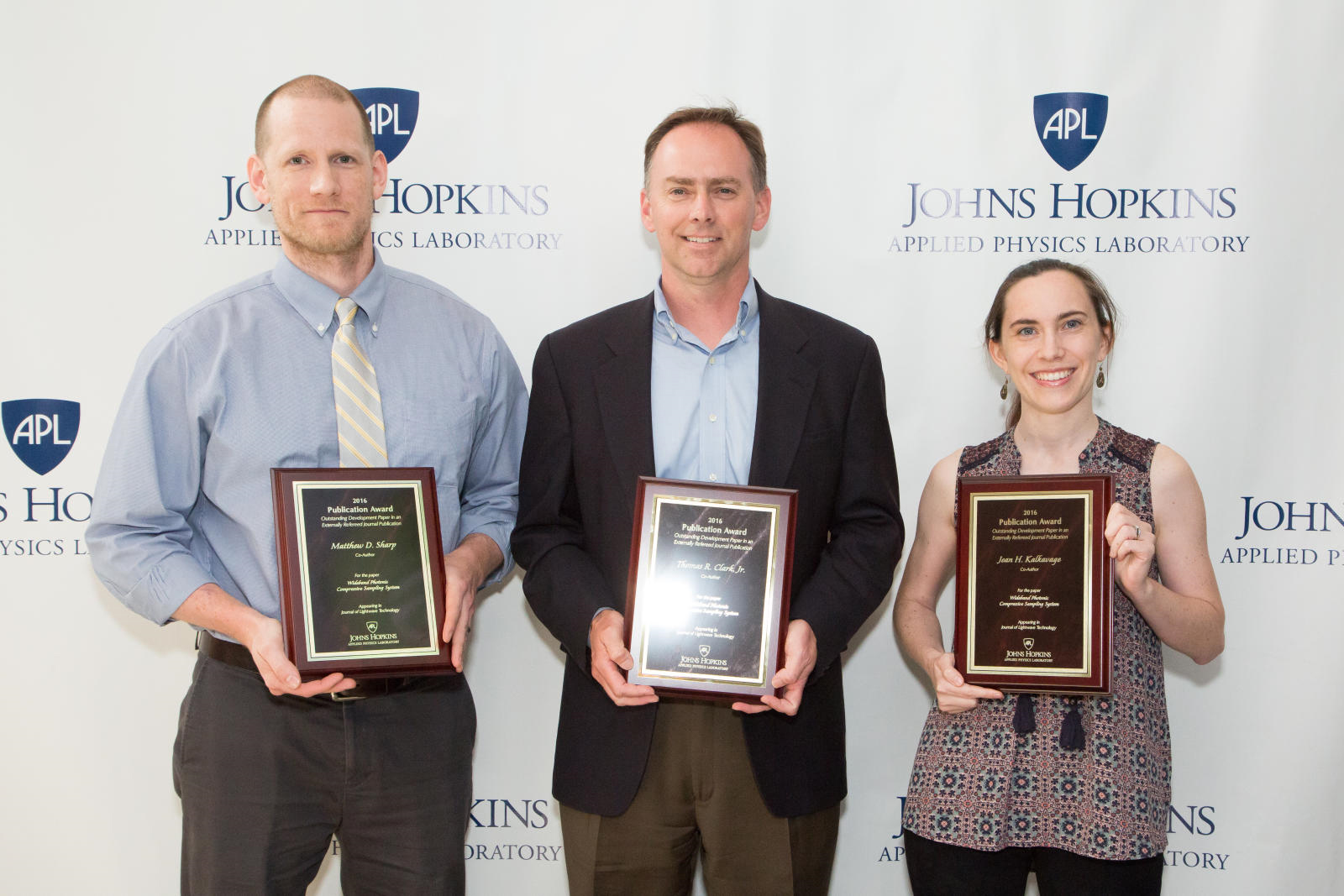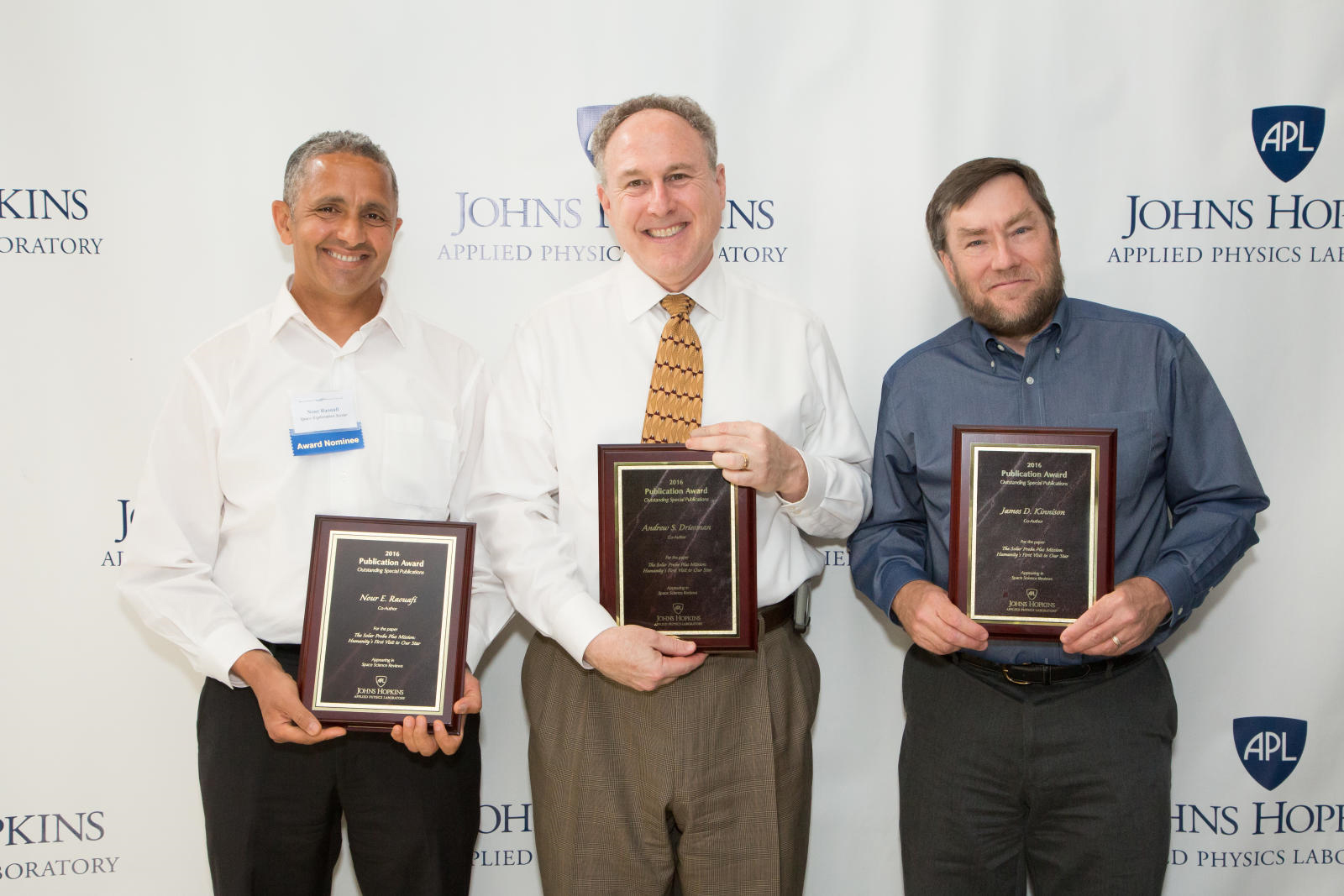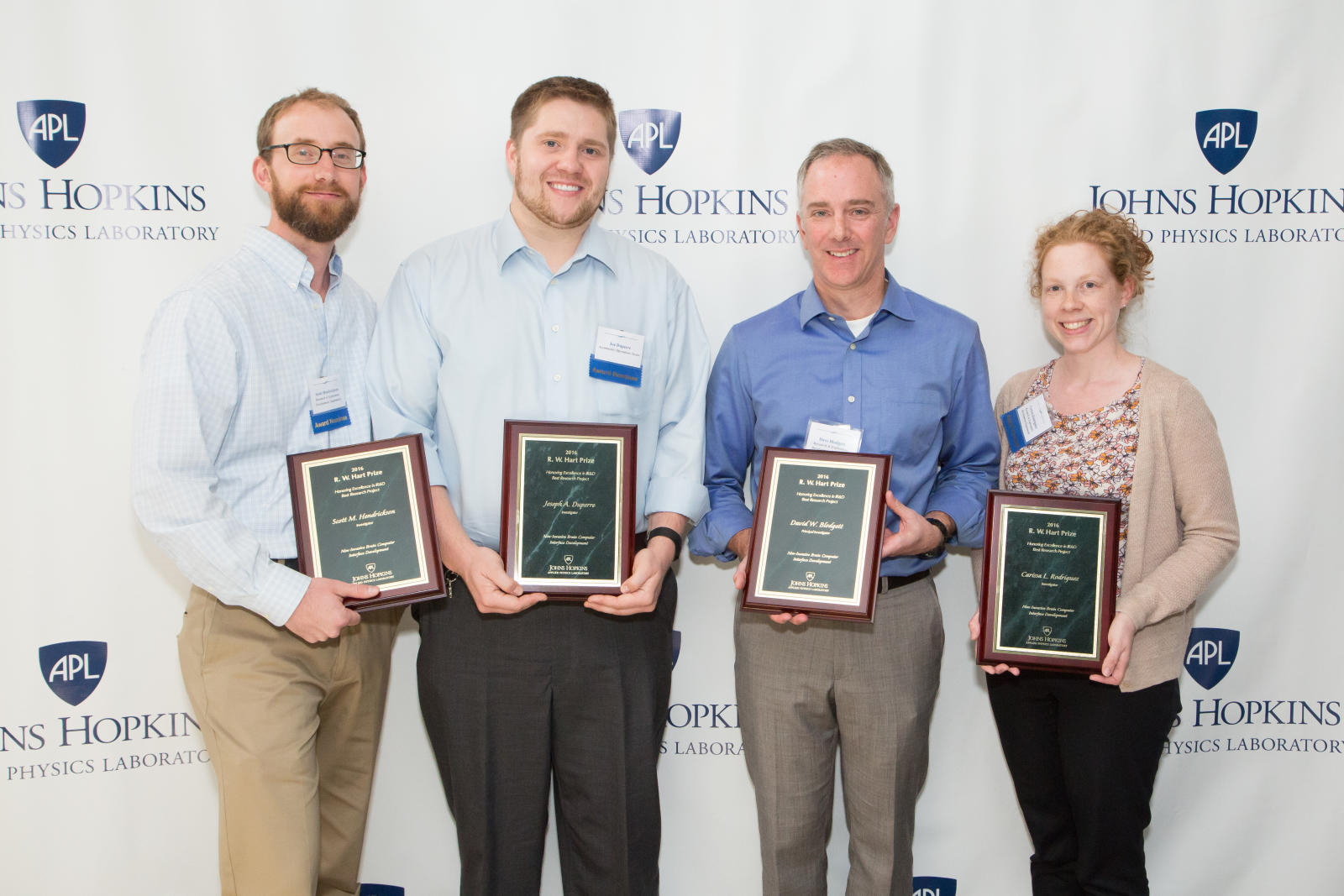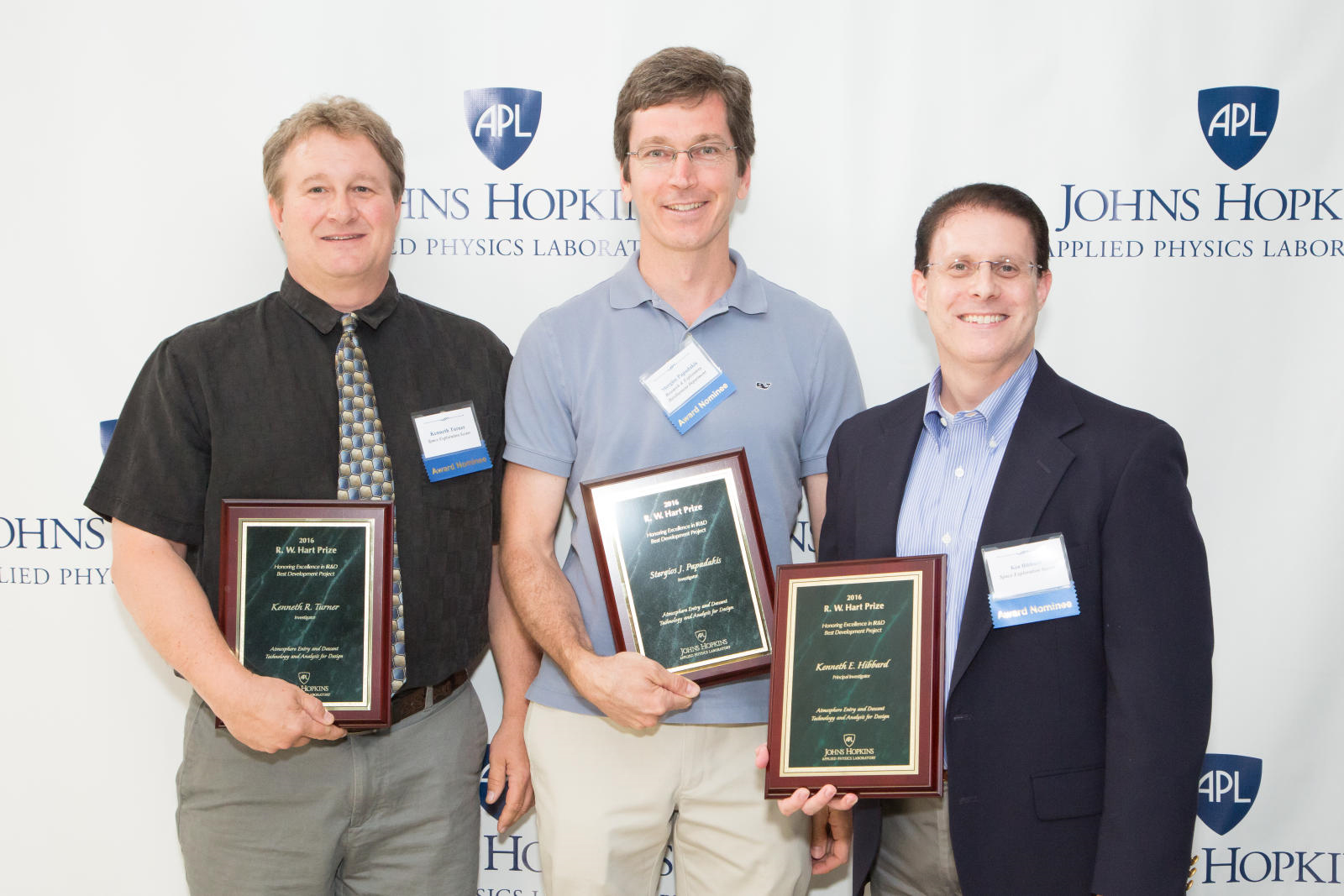Invention of the Year: Lance Baird and Xiomara Calderon-Colon, for their Surface Modified Anti-cancer Responsive Theranostic (SMART) method. SMART relies on nanoparticle structures to increase efficacy, improve administration options and minimize side effects of many previously problematic compounds.
Government Purpose Innovation Award: Mark Buchta and Dajie Zhang, for technology that mitigates failures associated with mechanically adhered coatings.
Ignition Grant Prize for Innovation: Elizabeth Bathrick, Jeffrey Dunne, Sean Kain and Blake Schreurs, for their tactical use of the Microsoft HoloLens.
Combustion Grant Prize for Innovation (tie): Jacob Alldredge and Matthew Brinkley, for creating custom acoustic metamaterials for the blood-brain barrier; Eliud Bonilla, Ian Hughes, Andrew Knuth, Ryan Mitch and Larry Paxton, for investigating revolutionary new and reliable communications via the proven technique of signals reflecting off the ionized trails of meteors plunging through the atmosphere.
Mission Accomplishment Award for Current Challenge: Aaron Correa, Hunter Dejarnette III, Paul Fritschen, Aaron Kunz, Eric McGinnis, Kurt Rice, Mary Ann Saunders, Matthew Spisso, Miller Wilt and Warren Zander, for developing and deploying a game-changing system for electronic warfare, information operations, and military information support operations for deployed combat forces.
Mission Accomplishment Award for Emerging Challenge: Marshall Alworth, Raphael Austin, Christopher Baumgart, Kenneth Brown, Jonathan DeSena, Jeffrey Gilbert, Glen Long, Andrew Newman, Kathleen Newtson and Michael White, for their work on Clutchshot, a joint program by the Offices of the Secretary of Defense and the Chief of Naval Operations to deploy a limited operational capability that leverages nontraditional sensor systems for targeting missions well beyond the horizon of engaging units.
Enterprise Accomplishment Award: Chinmay Amin, Nagakavitha Bajamahal, Jessica Chase, Robert Fleming, Manjula Ganapathi, Douglas Manning, Gregory Miller, Nikunj Patel, Robin Rude and Mary Virtue, for building the Warehouse Inventory Management System (WIMS), an automated web-based and mobile system that improves storage, delivery and tracking of items APL staff members use for sponsored and non-sponsored work.
The Alvin R. Eaton Award: Keith Caruso, for significant contributions and technical innovations that have directly impacted the security of our nation.
Director’s Award for Special Achievement: Tom Falk, Fazle Siddique, Johnathan Pino, Peter Sharer, Mike McIntyre and Susan Smith, for their work on the Assured Space Operations Game Technical Analysis.
Master Inventor: Earned by Russ Cain, for his 10 issued U.S. patents related to sensor integration systems while employed at APL. He is the 27th person to receive this award in the history of the Laboratory.
Publication Awards
Author’s First Paper in a Journal or Proceedings: Jacob Couch, for “An Investigation into a Circuit Based Supply Chain Analyzer for FPGAs,” published in the Proceedings of the 26th International Conference on Field Programmable Logic and Applications.
Outstanding Paper in the Johns Hopkins APL Technical Digest (The Walter G. Berl Award): Elena Adams, Nicola Fox, Kristin Fretz and Aleksandr Ukhorskiy, for “Van Allen Probes Mission Overview and Discoveries to Date.”
Outstanding Research Paper in an Externally Refereed Journal Publication (tie): Robert Armiger, Matthew Fifer, Matthew Johannes, Kapil Katyal, Matthew Para and Brock Wester, for “Individual Finger Control of a Modular Prosthetic Limb using High-Density Electrocorticography in a Human Subject,” published in the Journal of Neural Engineering; Brett Denevi, Carolyn Ernst, John Goldsten, Rachel Klima, David Lawrence, Scott Murchie and Patrick Peplowski, for “Remote Sensing Evidence for an Ancient Carbon-Bearing Crust on Mercury,” published in Nature Geoscience.
Outstanding Development Paper in an Externally Refereed Journal: Thomas Clark, Jean Kalkavage and Matthew Sharp, for “Wideband Photonic Compressive Sampling System,” published in the Journal of Lightwave Technology.
Outstanding Special Publications: Robert Decker, Andrew Driesman, Nicola Fox, James Kinnison, Martha Kusterer, David Lario Loyo, Mary Kae Lockwood and Nour Raouafi, for “The Solar Probe Plus Mission: Humanity’s First Visit to Our Star,” published by Space Science Reviews.
Hart Prizes for Excellence in Independent Research and Development
Best Research Project: Noninvasive Brain-Computer Interface Development, with principal participants David Blodgett, Kevin Baldwin, Joseph Duperre, Michael Fitch, Scott Hendrickson, Clare Lau, Carissa Rodriguez, Clara Scholl and Erich Walter.
Best Development Project: Atmosphere Entry and Descent Technology and Analysis for Design, with primary contributors Kenneth Hibbard, Douglas Adams, Clint Apland, Stephen Chan, Gary Holtzman, Calvin Kee, John O’Neil, Stergios Papadakis, Ryan Stevens and Kenneth Turner.
